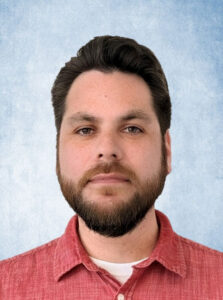
Contact
Biomedical Research Center251 Bayview Boulevard
Baltimore, MD 21224
Email: juan.gomez@nih.gov
Education
Ph.D. – The City University of New York
B.S. – Arizona State University
Background
High School – My initial exposure to laboratory work began during high school, where I volunteered my school breaks and weekends to assist a biology graduate student in analyzing water and soil samples from Arizona rivers. This hands-on experience introduced me to the fundamentals of laboratory research, including wet lab and environmental sampling techniques. As one of the few high school students presenting research at the annual Arizona State University poster day, I realized my enthusiasm for scientific inquiry.
Undergraduate (B.S.) – During my undergraduate studies in Psychology at Arizona State University, I worked in Dr. Cheryl Conrad’s lab, where I gained invaluable experience that shaped my work ethic and established my foundation as an academic scientist. In this environment, I quickly learned that being an undergraduate does not limit one’s contributions in a research setting.
Graduate (Ph.D.) – My doctoral training at Hunter College of CUNY under the mentorship of Dr. Victoria Luine was characterized by collaboration and intellectual growth. My dissertation work, conducted in partnership with Dr. Michael Lewis and other colleagues at Hunter College, exemplified the power of interdisciplinary collaboration. The collective contributions of my mentors and peers profoundly shaped my development as a scientist.
Postdoc – My postdoctoral work began at Oregon Health & Science University in the Behavioral Neuroscience department where I studied under the mentorship of Dr. Andrey Ryabinin. This experience introduced me to a higher level of scientific rigor and independence, reinforcing the importance of perseverance in the face of challenges and fostering a deeper appreciation for the value of collaborative and independent research.
This trajectory has been a blend of curiosity, collaboration, and continual growth—each phase building upon the last as I work to contribute meaningfully to the scientific community.
Research Interests
Dr. Juan Gomez is currently a Staff Scientist at the National Institute on Drug Abuse (NIDA) in Baltimore, Maryland. In August 2015, he became the inaugural member of the Biobehavioral Imaging and Molecular Neuropsychopharmacology (BIMN) Section, led by Dr. Michael Michaelides. Since joining the BIMN, Dr. Gomez has expanded his expertise in advanced imaging techniques and molecular neuroscience. His work focuses on utilizing radiometric approaches through PET imaging and autoradiography to uncover new insights into brain function and behavior.
At NIDA, Dr. Gomez played a key role in designing and establishing a state-of-the-art laboratory that integrates positron emission tomography (PET) imaging with behavioral neuroscience approaches. His training includes formal coursework in small animal in vivo imaging and PET pharmacokinetic analysis, complemented by extensive laboratory experience. He has applied advanced neuromodulation technologies with noninvasive imaging techniques in rodent and nonhuman primate models.
Dr. Gomez has authored numerous publications in high-impact journals, both as a first author and co-author, showcasing his strong collaborative skills. In addition to his scholarly work, he is an inventor with patents that highlight his innovative contributions to the field. His current research focuses on the role of novel superagonist drugs with significant potential as analgesics, offering high efficacy with minimal adverse effects. Additionally, he is advancing the development of cutting-edge PET imaging methods to visualize and characterize emerging biomedical technologies.
Publications
Selected Publications
2021
Synaptic Zn potentiates the effects of cocaine on striatal dopamine neurotransmission and behavior Journal Article
In: Transl Psychiatry, vol. 11, no. 1, pp. 570, 2021, ISSN: 2158-3188.
2019
High-potency ligands for DREADD imaging and activation in rodents and monkeys Journal Article
In: Nat Commun, vol. 10, no. 1, pp. 4627, 2019, ISSN: 2041-1723.
Ultrapotent chemogenetics for research and potential clinical applications Journal Article
In: Science, vol. 364, no. 6436, 2019, ISSN: 1095-9203.
2017
Chemogenetics revealed: DREADD occupancy and activation via converted clozapine. Journal Article
In: Science, vol. 357, no. 6350, pp. 503–507, 2017, ISSN: 1095-9203 (Electronic); 0036-8075 (Linking).
